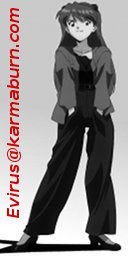|
|
Blog Archives:
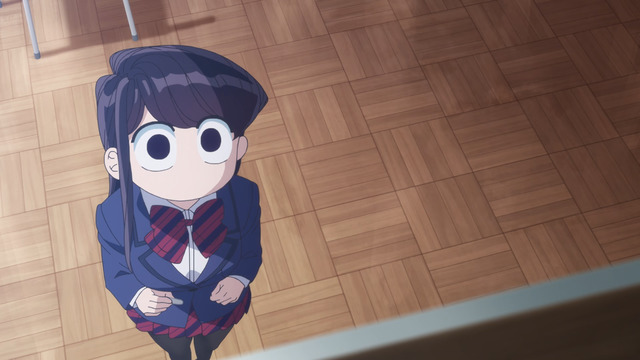
This is the good stuff.
I was only mildly interested in watching the Komi-san wa, Komyushou desu. (Komi Can’t Communicate) anime because I lost interest in the manga fairly quickly. I mean, the basic premise is fine, and the characters are all right, but there wasn't enough going for it to help it compete against all the other titles I'm reading. Honestly, the best thing in its favor was Komi's bug-eyed nervous face when she's confronted with something emotionally challenging.
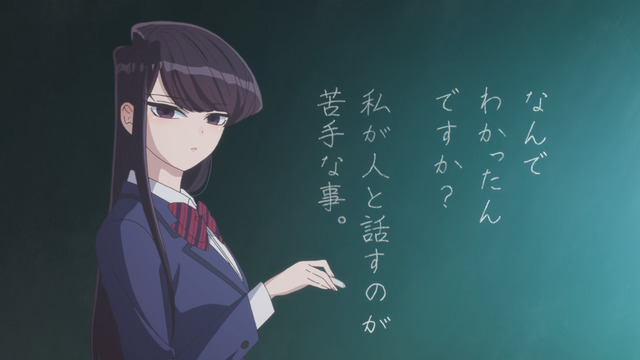
Komi's non-anxious form looks sort of weird, honestly.
Fortunately for the Komi-san anime, this visage is something the anime captured perfectly. The anime also devoted a surprising amount of attention to the shading and texture of Komi's stockinged legs, so maybe I shouldn't be surprised it got her comic form right. This brings me to my main reason for suggesting the Komi-san wa, Komyushou desu. anime is worth a shot: Its animation is unusually high-effort. The production values for this show went above and beyond what I would expect of a series that takes place largely at a school. There are visual flourishes everywhere. It's impressive without becoming distracting.
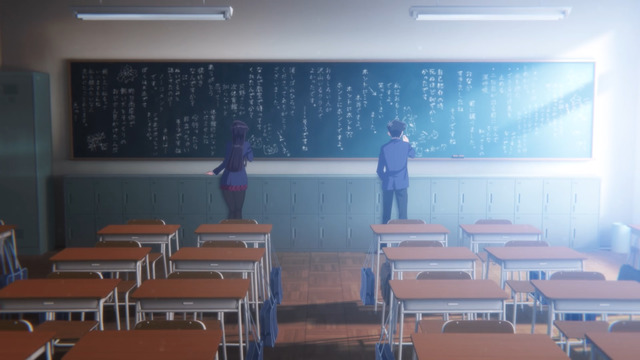
Such is the power of ditching gym class.
With regard to the Netflix, the U.S. release is a few weeks behind the Japanese one. (And it's even a week-by-week release instead of a binge-friendly dump like most typical shows on the Netflix.) Consequently, you may have seen some criticism about the lack of translated on-screen text in the official release, especially compared against what you might expect from, say, a fansub. There is a lot of text that was not translated in the first episode of the official release, but that episode had A LOT of text in general.
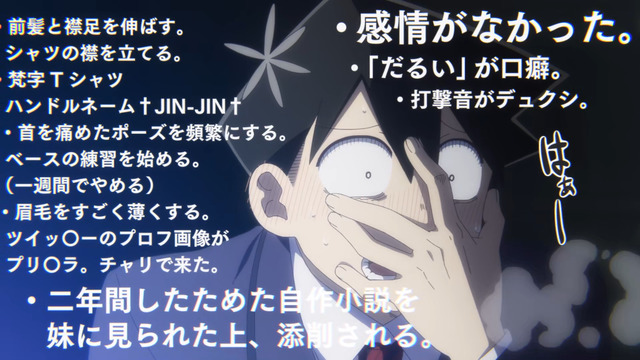
For real, that episode was wall-to-wall on-screen text.
But to be clear, we're not talking about an assault against typesetting in general (cf. the FUNimation's infamous three-line attacks), but rather the Netflix appears to have prioritized what on-screen text was critical to translate and what it could omit because it would either be apparent by context or be too difficult to read without pausing. In that sense, I'm okay with those decisions (at least for the first episode, anyway). Purists who want everything translated, even if it means pausing scenes at various points to read it all will be better off hunting for fansubs, but I don't think viewers who prefer to watch episodes all the way through without interruptions will find the specific omissions in the official release objectionable.
Posted in Komi-san wa, Komyushou desu. | Tags: Autumn 2021, First Episode, First Girl He Sees Clause, Initial impressions, Legs that go up to her neck, Season Introduction | Permanent Link

I liked the way Sawashiro Miyuki voiced Kitarou.
I knew basically nothing about GeGeGe no Kitarou before I started watching it two years ago. From the promotional material and initial surge of fan art, I at least determined that it was originally a manga from the 1960s that had five previous anime adaptions. It already had hundreds of episodes and numerous updates to its character designs. I decided to give it a chance based solely on this information, even though the NekoMusume character now had legs that went up to her neck. What I found was a modern family show with traditional ties in an anime that frequently featured thoughtful—yet entertaining—episodes.
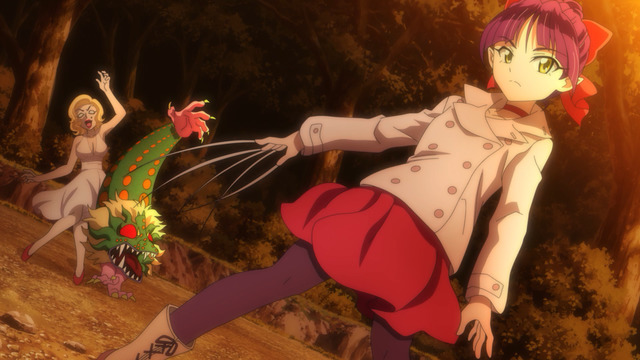
You would not believe how sick NekoMusume is of your shit.
I can't claim the show taught me a lot about yokai and their associated myths, but I'm at least a lot more familiar with them now. This is a sharp contrast to my first encounter with yokai, in Azumanga Daioh. They seemed perplexing and bizarre back then. I suspect this sort of familiarization was also intended for the younger viewers of GeGeGe no Kitarou. I don't know how often yokai feature in children's stories told to contemporary Japanese kids, but watching cartoons about them probably at least reinforces their understanding about old-timey lore. For little kids, it was sort of a violent and grisly show by American standards, though—about on par with what they'd see in Detective Conan.
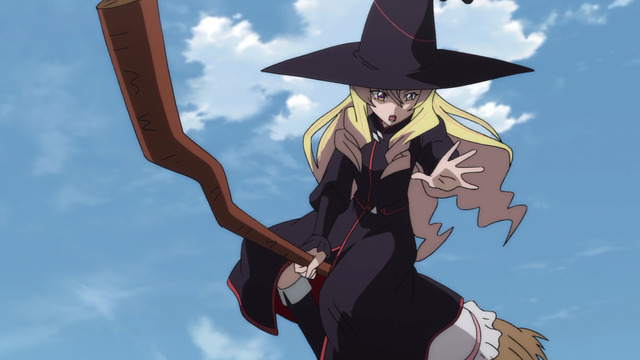
At least the first Backbeard arc gave us Agnes.
P.S. EINS, ZWEI, GUTEN MORGEN.
Ultimately, was it really worth watching 97 episodes of GeGeGe no Kitarou just to say I've seen it? It's not the sort of show I'd recommend for people to plow through if it doesn't immediately capture their attention (to say nothing of the hundreds of episodes that ran prior to the latest iteration), but watching it week-to-week was all right. There wasn't much of a cohesive narrative, discounting some of the longer arcs. Thankfully, the second "Backbeard" arc turned out to be much shorter than the first one, as Backbeard was not much of an antagonist. It turns out the true villains are the evils we bring forth from within ourselves. P.S. Spoilers.
Posted in GeGeGe no Kitarou | Tags: CATS, Legs that go up to her neck, Manga, Miyuki Sawashiro, Season Conclusion, Superlovely Character Designs, tsundere, Unrequited Love, war, War Is All Hell, Winter 2020 | Permanent Link
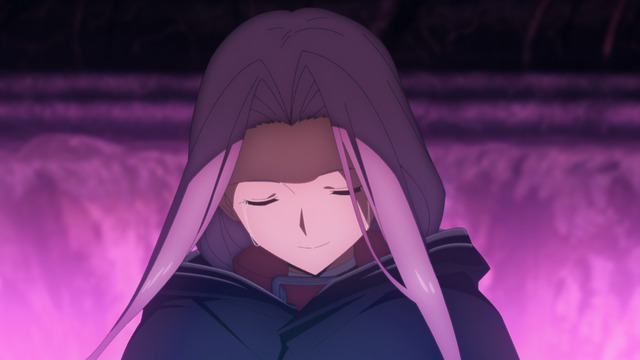
Ana is a good girl.
Firstly, I fully expected to find Fate/Grand Order: Zettai Majuu Sensen Babylonia (Fate/Grand Order: Absolute Demonic Front Babylonia) mostly incomprehensible, since I was basically ignorant about its lore aside from what I managed to glean via the Twitter and from the copious amounts of fan art devoted to the franchise. This did, indeed, turn out to be the case. It certainly does not help that Fate/Baby was episode seven within its underlying Fate GO game's narrative.
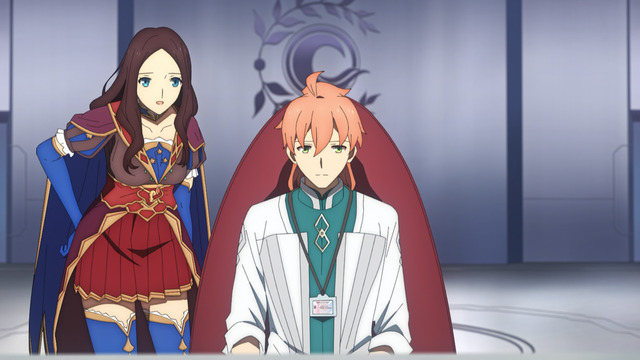
Leonardo never pulled up a chair of her own.
Secondly, none of that mattered, since the animation in Fate/Grand Order: Absolute Demonic Front Babylonia was frickin' amazing. It was literally so good that the story was inconsequential. It's worth watching just because it looks so good. I know in a post-Shirobako world we're not supposed to mention the B-word, but the anime adaptation of a franchise that prints money clearly had resources available to it, that, say, Cop Craft did not. The animation in Cop Craft gave me the impression people were doing the best they could in the face of adversity they did not control. The animation in Babylonia made me think animators were showing off and trying to outdo each other week after week.
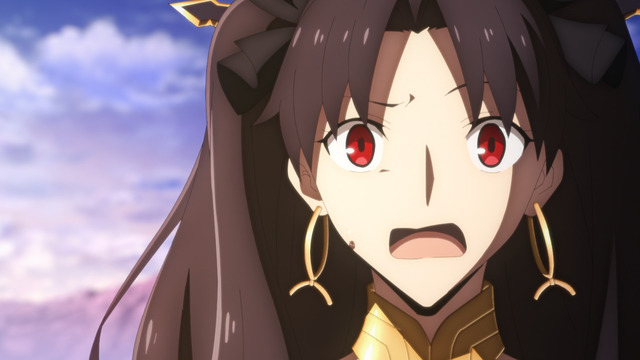
Believe it, baby.
Thirdly, these conditions serendipitously produced the best variant of Tohsaka Rin (Toosaka, whatever) of all time. Even better than Kaleido Ruby. I don't actually know why Ishtar looks like Rin from Fate/stay night. I literally could not break it down for you even though the show explicitly addressed it, and I've read the various summaries found in wikis for the game and whatnot. I find these explanations unsatisfactory. In any event, it doesn't matter. All you need to know is that Ishtar is a game-breaking home run. Oh, and Ereshkigal is okay, too.
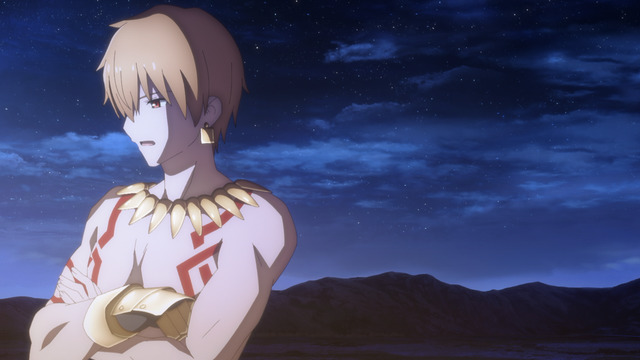
It turns out Gilgamesh was a lot more chill back in the day.
Finally, Fate/Grand Order: Zettai Majuu Sensen Babylonia was a really loud show. I don't think the show streamed with a discrete LFE channel (I didn't check), but it was at least mixed in such a way that every episode got considerable use out of my subwoofer. Planet With was sort of like this too, but it was sort of unpleasant during Planet With. On the other hand the deep impacts and 'splosions in Fate/Baby were really satisfying. I keep telling people not to skimp on the audio portion when setting up their preferred viewing space, whether it be a television or a computer. Hopefully, fans of Babylonia followed this practice as well. Totally worth it.
Posted in Fate/Grand Order: Zettai Majuu Sensen Babylonia | Tags: Air Power, All-Time Babes, Asakawa Yuu, Autumn 2019, AYAKO DOCTRINE, Big Fat Braids, Built for Sin, Fan Service, GAME-BREAKING HOME RUN, Games, Harem Comedy, Legs that go up to her neck, Sakamoto Maaya, Season Conclusion, Superlovely Character Designs, tsundere, TYPE-MOON, Ueda Kana, Video Games, war, War Is All Hell, Winter 2020 | Permanent Link
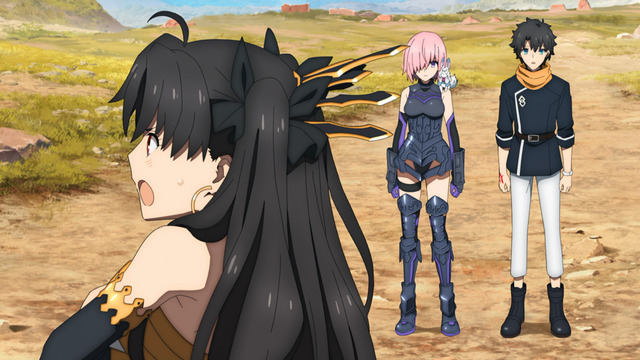
Potato-kun, are you wearing capri pants on this expedition?
The actual story and lore associated with Fate/Grand Order is incomprehensible to me because everything I know about it comes from secondary or tertiary sources such as people on the Twitter talking about the game, or from its fan art, or from people on the Twitter talking about the game's fan art. And while I have a semi-coherent understanding of the original Fate/stay night game, the currently airing Fate/Grand Order: Zettai Majuu Sensen Babylonia (Fate/Grand Order: Absolute Demonic Front Babylonia) anime is so removed from those origins that what I do know doesn't help at all. Compounding the problem, the anime seems to be adapting the seventh major arc of the FGO game, so there's an implied understanding that viewers should be familiar with the equivalent of six previous seasons. After the prologue and two proper episodes (plus the Fate/Grand Order -First Order- OVA), I'm still sort of lost.
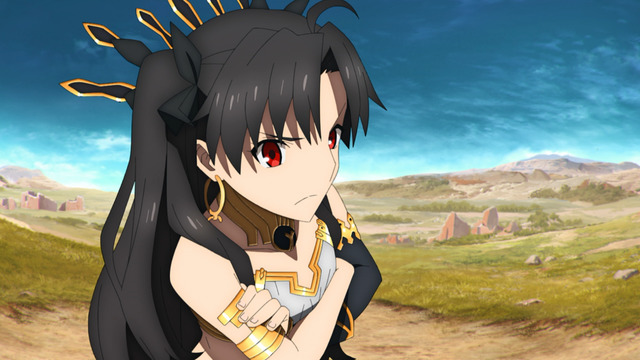
I can't rule out the possibility Marisa stole Ishtar's shit.
Thankfully, it seems recognizing references or knowing all the lore is not strictly necessary to enjoying the Fate/Grand Order: Zettai Majuu Sensen Babylonia anime. For one thing, it looks fantastic, and is probably the first solid example of a show where I can clearly identify 3DCG elements without having any of it bother me at all. (Okay, the lions bother me a little bit.) For example, flowing water actually looks as if it belongs in the same world. Additionally, the action scenes are entertaining, albeit rather busy. There is a lot of shit going on and a lot of cuts that seem designed to impress via fancy animation. Well, they are fancy, and I am impressed, but I think I'd prefer a less frantic style. Really, though, these are minor complaints on my part at best (even the stuff about the incomprehensible lore). As a matter of general principle, I'll almost certainly continue to watch Fate/Grand Order: Absolute Demonic Front Babylonia for as long as it runs, providing it periodically features Ishtar doing Ishtar-type things.
Posted in Fate/Grand Order: Zettai Majuu Sensen Babylonia | Tags: Asakawa Yuu, Autumn 2019, AYAKO DOCTRINE, Built for Sin, Fan Service, GAME-BREAKING HOME RUN, Games, Hair, Legs that go up to her neck, Sakamoto Maaya, Season Introduction, TYPE-MOON, Ueda Kana, Video Games | Permanent Link
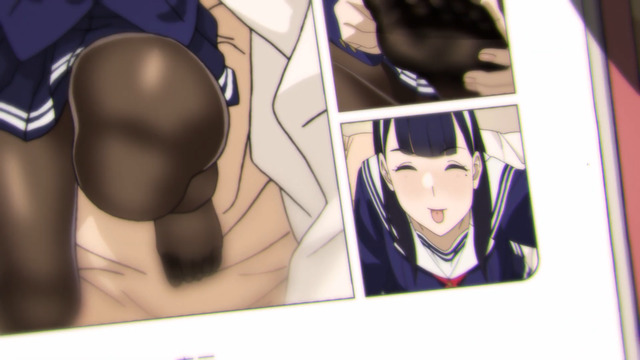
There's also a Saekano connection.
When I first saw the announcement for a Miru Tights anime, I assumed it was only going to be an OVA. It turns out it's a series on the YouTube. There are five episodes so far, with about as much continuity as you might reasonably expect from a collection of anime shorts that exist pretty much solely for ogling-type purposes. It's loosely based on the work of this artist (Yom). Surprising no one, I'm sure, hosiery features prominently throughout each four-minute episode.

This is some combination.
With regard to other fetish anime, I suppose Miru Tights shares most in common with Aiura (which arguably is not a fetish anime at all). I'm not sure I've seen very many other fetish shows, for that matter, although I guess Anitore! EX and Anitore! XX count. Miru Tights is also doing that thing where various popular artists provide stylized end cards for the show, although they don't appear with the episodes hosted on the YouTube. You can find them at the usual places and (partially) via the Twitter. I don't have any idea how many episodes Miru Tights is expected to run, but it started late, so probably less than 10? Or maybe they'll just keep making episodes forever, like One Piece. That could happen, right?
Posted in Miru Tights | Tags: Built for Sin, Compare and Contrast, Fan Service, Haruka Tomatsu, Kayano Ai, Labor of Love, Legs that go up to her neck, Season Introduction, Short Shows, Spring 2019 | Permanent Link
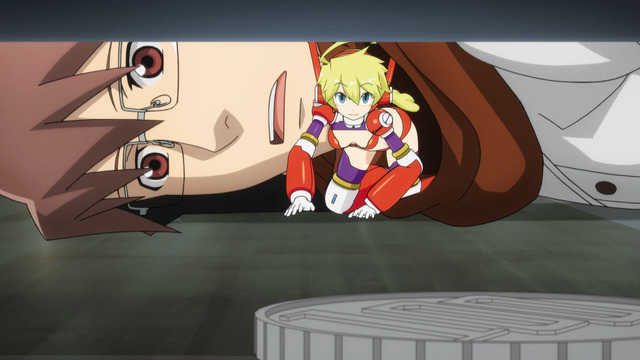
It's probably so nasty under there.
Chou Kadou Girl ⅙: Amazing Stranger is about a sentient 1/6th scale anime figurine who lives with a fan of her franchise. Although there are other shows about tiny wives and the people who love them (for example, Nona arguably has more in common with her Frame Arms Girl counterparts), I'm still going to point to Hand Maid May as the best example of this sort of thing. I think it's because I enjoy the two human leads in Hand Maid May (Kazuya and Kasumi), whereas I'm mostly ambivalent about Haruto from Amazing Stranger. His kid sister seems okay, but she's not in the show much. Both Hand Maid May and Amazing Stranger do feature copious amounts of fan service and lots of meta humor, so I guess they also have that in common. I've written about Hand Maid May a fair amount on this site already, so just read those old entries if you're still curious why I seem to like it so much.
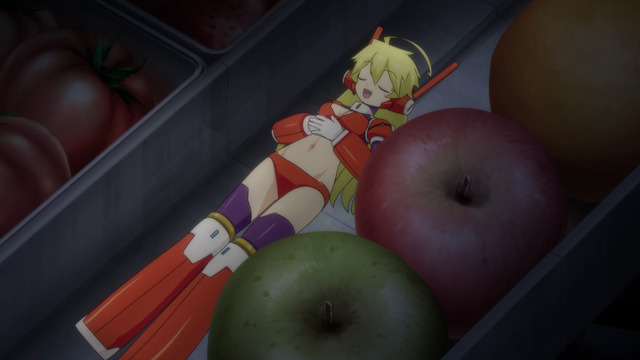
The explanation for why Nona sleeps in the refrigerator was not at all convincing.
With regard to Chou Kadou Girl ⅙: Amazing Stranger, it's sort of uneven, but I find some of the gags amusing. I also like the robotic autotuned voice in the OP. More importantly, I appreciate that Nona is not entirely dense, so the show isn't structured around increasingly strained misunderstandings and complex scams. That is a nice change of pace. It also makes her a bit more human. I guess that's technically a sort of racist thing to say about a tiny plastic space...whatever she is, but it is an important part of getting me to care about the events within the show. That was something notable about Hand Maid May—I cared about where the characters were going to end up. Amazing Stranger isn't quite there yet, but hopefully its remaining episodes will provide at least a little more emotional resonance.
Posted in Chou Kadou Girl ⅙: Amazing Stranger, Hand Maid May | Tags: Androids, Anime Figures, Built for Sin, Built for War, Compare and Contrast, Fan Service, Harem Comedy, Legs that go up to her neck, Mecha Musume, OP ED, Season Introduction, Spring 2019 | Permanent Link
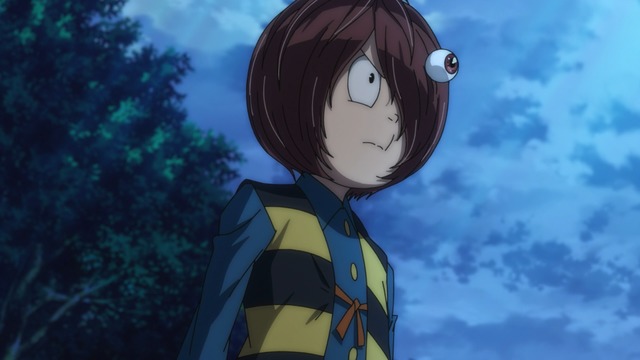
Neither of these two have binocular vision.
I saw an announcement about the next GeGeGe no Kitarou ED planned for January. I guess this means the show will be continuing through at least the Winter 2019 anime season, giving it a yearlong run. More, if it continues after that uninterrupted. I'm mostly content to continue watching it as long as there are new episodes. It's been a reliably good family show through the 35 episodes I've seen, and I can appreciate it for its decades-spanning impact.

Hey, she's wearing a different outfit.
For a show with so much history, it's unexpectedly eager to challenge certain subjects I'm not accustomed to encountering in anime. Notably, there was an episode concerning World War II that spoke directly to an apparent failure in the current education system to adequately cover Japan's roles in the war. Then there's the current major arc involving foreign yokai (some of whom were outright refugees) and the different receptions they face, from sympathy to outright hostility as both xenophobia as well as some understandably unwelcome foreign yokai behavior created flashpoints not unlike contemporary real-world events and concerns. Or perhaps it's because GeGeGe no Kitarou has so much history and is such an established part of the anime landscape that it has greater latitude to address these topics.
Posted in GeGeGe no Kitarou | Tags: Autumn 2018, Legs that go up to her neck, Miyuki Sawashiro, OP ED, Superlovely Character Designs, tsundere, war, War Is All Hell, Winter 2019 | Permanent Link
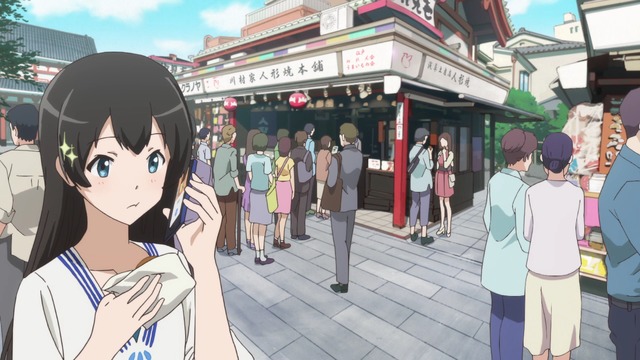
This was a blatant effort to encourage anime tourism.
I starting watching Shoujo☆Kageki Revue Starlight thinking it was going to be an idol anime that would contrast nicely when watched back-to-back with Ongaku Shoujo. Yeah, that turned out to be wrong. It's not an "idol anime" at all, or at least it's less so an idol anime than it is a "wack ass giraffe fight club" anime, as I've seen it characterized on the IRC. To tell you the truth, I'm not entirely sure what to call it.
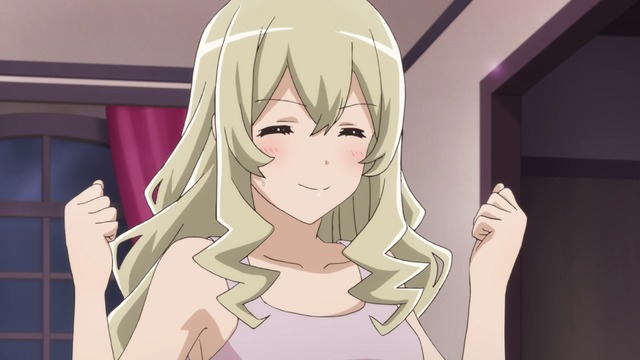
Très bien!
Not that there's any compelling need to slot Shoujo☆Kageki Revue Starlight into some sort of category. All the really matters to me is that the audition portion of the first episode blew my mind. The fact that we got three straight episodes of "auditions" is rather astounding, although I don't imagine this is something we can reasonably expect an animation studio to keep up week after week. I'm calling them auditions, but you should bear in mind that these segments in Revue Starlight are auditions the way tank battles in GIRLS und PANZER are school sports.
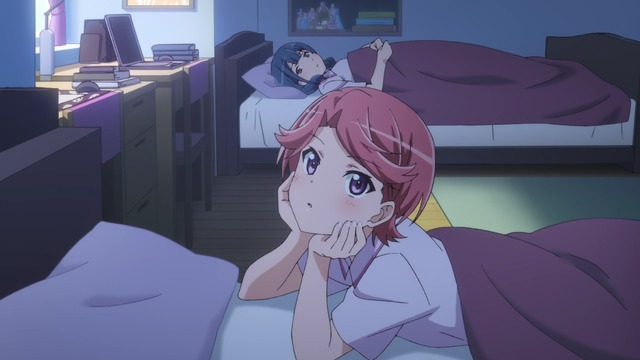
I'm looking forward to these two becoming bitter rivals.
Naturally, since Shoujo☆Kageki Revue Starlight is about nine girls vying for the top spot, I've already picked sides and chosen favorites. There is also some expectation that various pairs will be forced to turn on each other as the competition heats up (it is right there in the OP, okay), but at least we're not likely to see loved ones dematerialize into green sparkles. I mean, they do still need people to put on the show.
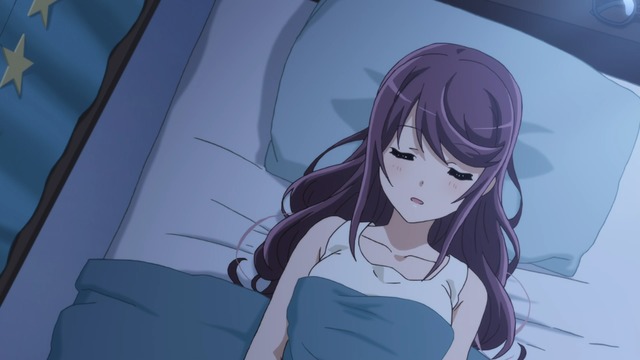
Junna here setting totally unrealistic bed head expectations.
After four episodes, Shoujo☆Kageki Revue Starlight holds the top position in my Summer 2018 anime rankings, ahead of even Hanebado! even though Hanebado! has a lot more bitches being bitches. Naturally, I like the Revue Starlight supporting characters more than the leads, but that's pretty much how these sort of things go for me. In fact, I don't see anyone displacing the current top four, incidentally.
Posted in Shoujo☆Kageki Revue Starlight | Tags: Anime Tourism, Ballet, Childhood Friend, Hair, Idols, Initial impressions, Legs that go up to her neck, Music, OP ED, Season Introduction, Spoilers, Summer 2018, Turbo Lesbians, Unrequited Love | Permanent Link
|
|






